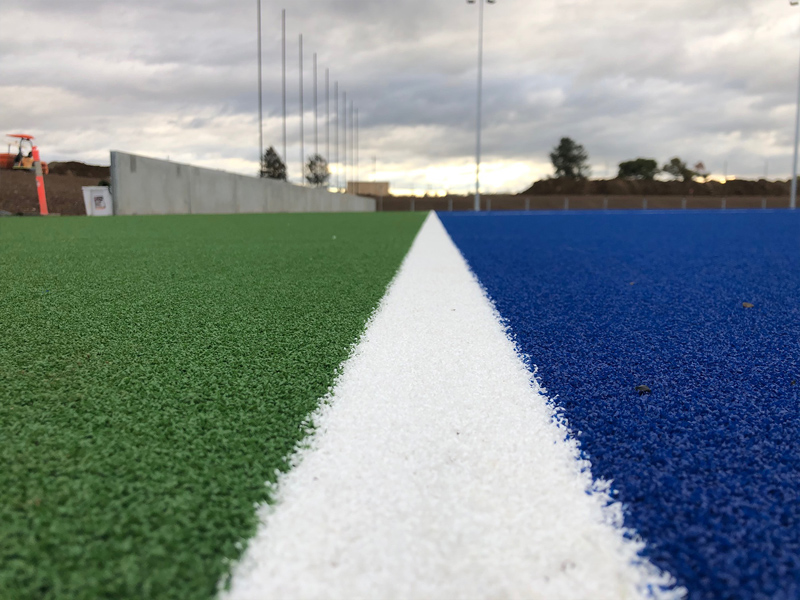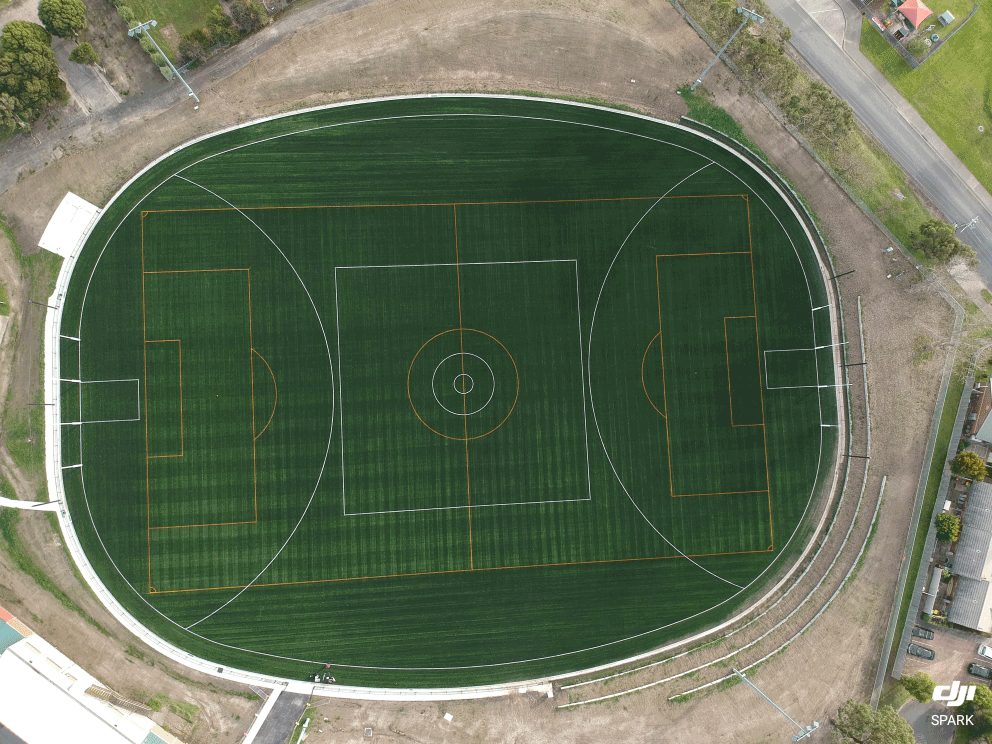3 Methods for Sports Field Marking Lines | Sports Artificial Grass Installation & Maintenance
- 12/21/2023
Artificial turf is more and more commonly used in different types of sports fields, such as football, rugby, hockey, tennis and so on. Often, demand is such that an artificial turf field has to cope with more than one sport, so multi-sport fields have become popular. Multi-sport fields need marking lines to distinguish areas, which will be more complicated. This article will introduce three methods for sports field marking lines, plus valuable maintenance tips at the end.
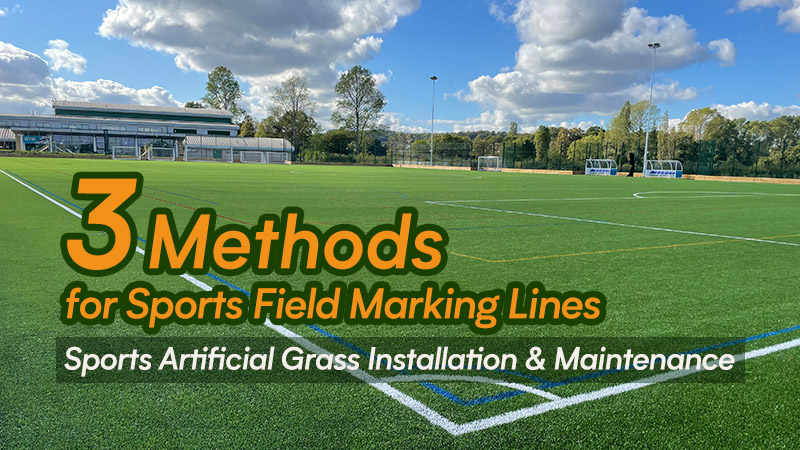
1. Direct Ordering
Customers need to communicate with the artificial turf manufacturer before purchasing and mark the width of the marking line accurately through precise measurement and design of the field. Then the factory tufts the grass fibres of different colors together according to the given data so that it can produce grass rolls with white or yellow or other color marking lines.
Direct ordering of sports field marking lines can improve firmness, reduce unnecessary cutting waste, and control the cost as well. However, this way has very high technical requirements for production and installation, and there should be no deviations in the process from production to installation, otherwise, it will cause errors of the whole field.
The sport of hockey, characterized by high ball speed, imposes stringent requirements on the playing surface, particularly in terms of smoothness. Additionally, since there is minimal infill after turf installation to provide pressure, the demands for the field’s construction are increased. Consequently, hockey pitch paving necessitates minimal seams, and its five vertical white lines are woven into the surface. The woven lines must be straight, otherwise it will be very troublesome to rework.
2. Inlaid sports field marking lines
The inlaid artificial grass lines reduce maintenance costs and are less prone to errors, so they are generally recommended for all the main pitch markings. Usually, we use white artificial grass as the line marking for sports fields. The white grass lines have the same specifications (or similar specifications) as green grass. Sometimes there are some other colors of artificial grass, including yellow, blue and red.
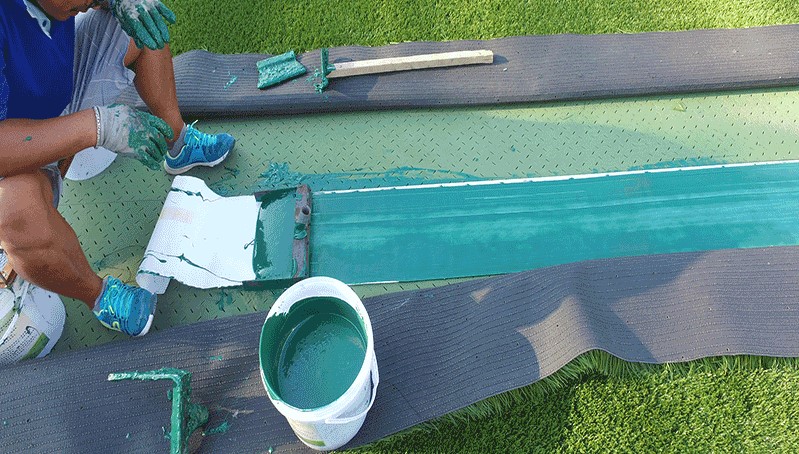
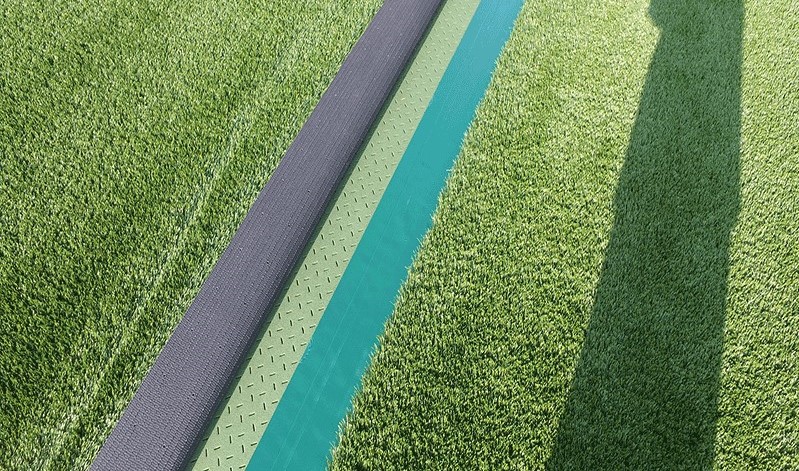
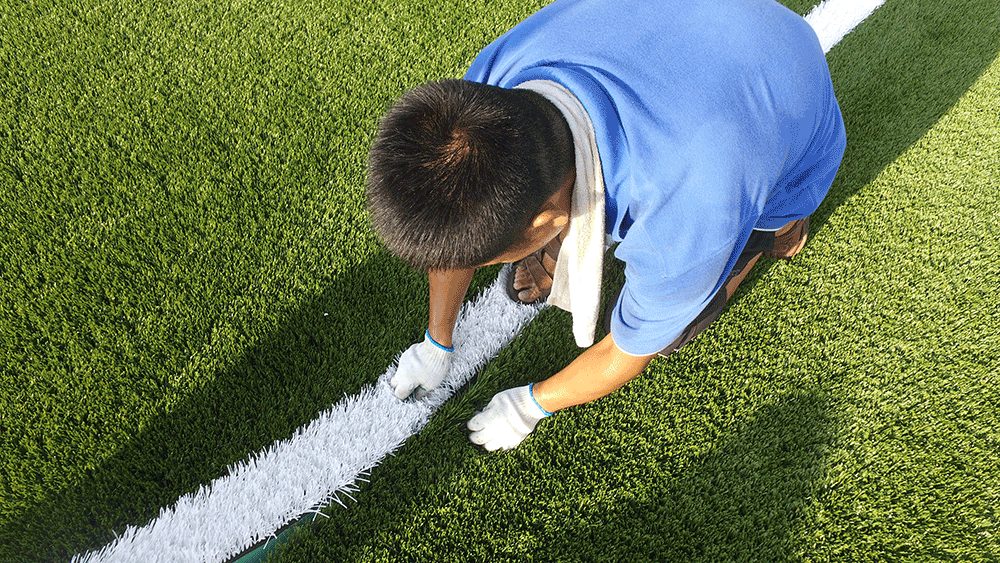
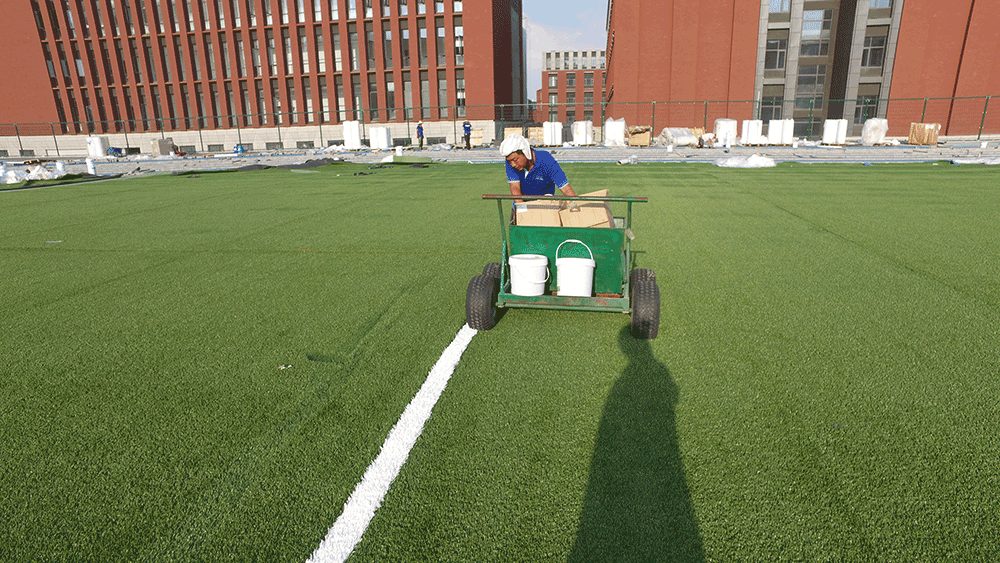
To inlaid marking lines, you need to cut the green artificial grass where the lines should be, then insert the white lines. After that, seam the lines and green grass together with seaming cloth plus glue. For details, please refer to our sports field installation video.
Marking lines for different sports fields
Artificial turf area required for sports field installation is equal to the net field area plus the installation loss plus the area of sports field marking lines. You can refer to the table below for the data of different sports field specifications and marking lines.
| Sports Field Type | Field Size (m) | Marking Line Width(cm) | Installed Lawn Area (m2) | Installed Marking Line Area (m2) |
| 11-a-side football field | 105 × 68 | 12 | 8000 | 100 |
| 7-a-side football field |
50-80 × 35-50 | 10 | 4000 | 60 |
| 5-a-side football field |
38-42 × 18-27 | 10 | 1500 | 30 |
| rugby field | 109.7 × 48.7 | about 6000 | ||
| hockey field | 91.4 × 55 | 7.5 | about 5000 | 60 |
| basketball court | 28 × 15 | 5 | 420 | 12 |
| tennis court | 10.97 × 23.77 | 10 ( base line) 5 (Others) |
>660 | 10 |
| badminton court | 6.1 × 13.4 (Doubles) 5.18 × 13.4(singles) |
4 | >230 | 6 |
| volleyball court | 9 × 18 | 5 | >360 | 4.8 |
| gateball court | 22 × 15 | 1-5 | <400 | 5 |
| handball court | 40 × 20 | 5 | 800 | 17 |
3. Line marking paint for sports fields
The use of line marking paint eliminates the need to cut and inlaid artificial grass lines, making installation easier and reducing waste during paving.
However, the longevity of marking line paint is difficult to quantify, as there are a number of variables that affect how the paint adheres to the grass. You need to re-paint the lines when the color fades.
For multi-sport fields, it is appropriate to use marking paint to draw the marking lines. The choice of colors is important, and as a rule of thumb the most frequently played sport should be marked out in white, the second most frequent in yellow, followed by blue and red.
Choosing the right marking material is also crucial. The marking material should prioritize player and environmental safety while also being durable. It is essential to use specialized turf coatings instead of regular paint.
There are different types of products available, including temporary and permanent options, depending on your needs. For temporary markings, you can opt for chalk-based products that are easy to apply and remove, and water-based paints can also be used. For permanent line markings and logos on synthetic turf, aerosol paints can be chosen.
When painting lines, there are quite a few different types of line marking machines that will help you to get perfectly straight, professionally painted sports field marking lines. Depending on field size and desired drawing speed, options include line marker wheels, machines, spray jet markers, or aerosol line markers.
Bonus: Sports turf field maintenance tips
Regular maintenance is crucial to ensure a sports field’s longevity, playability, and safety. Here are essential tips to keep your field in optimal condition, providing a stable and high-performance sports environment.
Turf grooming
Grooming is done weekly to keep the grass blades upright, ensure an even spread of infill, and clear away debris. The frequency of grooming depends on usage; if the field is frequently used, grooming should be done more often.
Hazards Monitoring for Safety
During your routine grooming, actively scan for potential hazards or issues like loose inlays, sink-holes, metal, or worn fibers. Regular and attentive field inspections can prevent minor problems from escalating into major concerns.
Ball roll test for infill maintenance
For artificial turf football fields, a practical self-assessment involves a simple ball roll test—a key FIFA testing measure. After maintenance, use a standard Size 5 ball: If it rolls too far, there may be inadequate infill compaction; if too close, add the right amount of infill.
Seasonal raking and annual infill replenishment
For more intricate maintenance tasks, like loosening granules on a quarterly basis and replenishing infill annually, it is recommended to engage a professional maintenance team. This scheduled care ensures the ongoing performance and longevity of the synthetic turf.
CCGrass – Your Turf Solution Expert
CCGrass has developed various sports turfs for the global market, including football, rugby, hockey, tennis and multi-sport. Thanks to close strategic cooperation with world-renowned labs and continuous investments in R&D, our artificial sports grass meets the highest standards from leading sports organizations such as FIFA, World Rugby, FIH and ITF. Call us at 86 25 6981 1666 or email us at [email protected] to find out more today!



